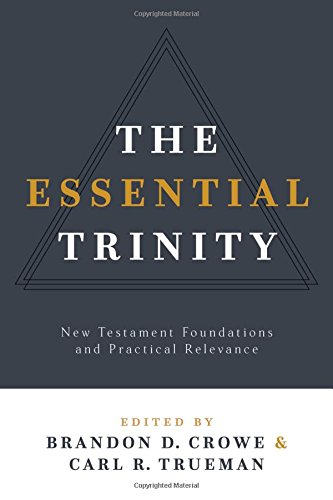A Brief Book Summary from Books At a Glance
by Mark Baker
Introduction
The Trinity is easy to misunderstand, and therefore it is easy to marginalize the doctrine as non-biblical doctrine or as philosophical speculation. But instead of a marginalized doctrine, the Trinity should be seen as foundational to Christian theology (19). Part 1 of this book will investigate the trinitarian contours of every book of the New Testament as well as the Old Testament roots of the Trinity. It should be said that the word “Trinity”, as well as key concepts such as homoousios, do not appear in Scripture; nevertheless, this “precision of language does not import something foreign into the biblical texts, but faithfully articulates the content of those texts” (20). This book will use the words “Trinity” and “trinitarian” in relation to the biblical text. This usage is not an attempt to smuggle in fourth-century doctrine on first-century texts; rather, it is a way to “speak of the triadic contours of the text that lead—inexorably—to the doctrine of the Trinity” (20).
Part 2 will focus on how the Trinity affects our practical lives. Though the contributors to this book come from various theological perspectives, they are all in agreement that the Trinity is a “non-negotiable aspect of the one catholic and apostolic faith” (20). The doctrine of the Trinity is necessary both for the faithful interpretation of Scripture and for everyday life.
PART 1: NEW TESTAMENT FOUNDATIONS
Chapter 1: The Trinity and the Gospel of Matthew
Brandon Crowe
Matthew’s gospel has both a high Christology and strong teaching of the activity of the Holy Spirit. This chapter looks first at the Father in Matthew, then divine Christology, and finally the Holy Spirit as he relates to the Father and the Son. Matthew’s depiction of the Father is clearly the covenantal God of Israel (Matt 1:1). He is the God of Old Testament Scripture (Matt 6:25–33). He has no rivals in his supremacy (Matt 4:10).
How does Matthew describe Jesus? Remarkably, Jesus “is placed on the Creator side of the Creator-creature distinction” (29). Matthew shows this most explicitly in Jesus’ prayer in 11:25–27. Verse 27 says that no one knows the Son except the Father, and it goes on to show that Jesus can reveal the Father. Jesus has a crucial role in the revelation of salvation, which shows that he is no mere creature; he is one with the Creator. Matthew also depicts Jesus as the divine Son (14:33) and as Immanuel (1:22–23).
Matthew depicts the Spirit in close relation with both the Father and the Son. At Jesus’ baptism, it is the Spirit of God who rests on Jesus (3:16), and Jesus casts out demons by the Spirit of God (12:28). Similarly, it is the Spirit who is responsible for Jesus’ conception (1:18, 20), and the Spirit gives Jesus the power he needs for his messianic ministry (3:11).
Finally, the Great Commission (Matt 28:18–20) is Matthew’s clearest depiction of the relationship between Father, Son, and Spirit. Jesus’ followers are to baptize new disciples in the name of the Father, Son, and Spirit. The word name is singular, yet there is an article before each person of the Trinity. This passage displays both the unity and the distinctness of the persons of the Trinity. This passage is not only one of the clearest depictions of the Trinity in Matthew, but also in the whole Bible. . . .
[To continue reading this summary, please see below....]The remainder of this article is premium content. Become a member to continue reading.
Already have an account? Sign In
